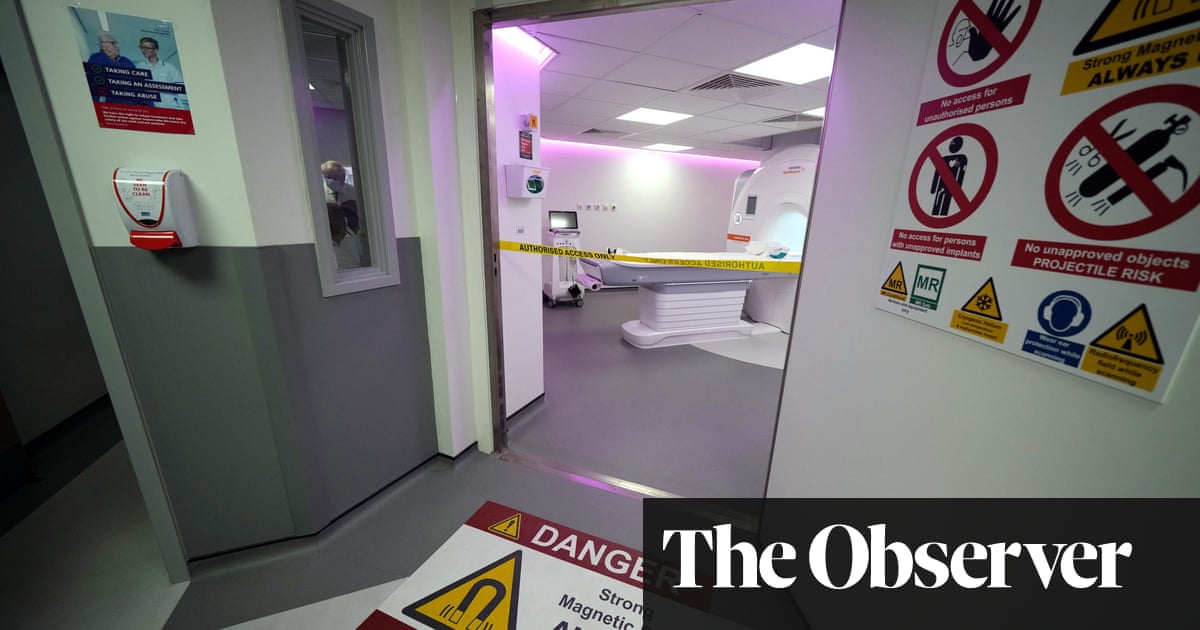Cheaper, quicker prostate cancer scans just as accurate ‘and can help more men’
Cheaper, quicker prostate cancer scans just as accurate ‘and can help more men’ The Guardian


Cutting MRI Scans for Prostate Cancer Could Lead to Major Reduction in Deaths

Cutting the duration of MRI scans for prostate cancer by a third would make them cheaper and more accessible without reducing their accuracy. That is the key result of a UK trial which indicates that lowering costs could ensure more men are offered scans.
Sustainable Development Goal: Good Health and Well-being
According to Cancer Research UK, there are about 52,300 new prostate cancer cases every year in the UK, equal to more than 140 a day.
The Trial and Findings
At present, doctors offer patients with suspected prostate cancer a three-stage MRI scan, with the patient injected with a contrast dye at the third stage: this helps to enhance the images from the scan.
As part of a trial entitled Prime and involving 555 patients from 22 hospitals in 12 countries, researchers from University College London (UCL) and University College London Hospitals assessed the impact of dropping the third stage. They found that using the shorter scan allowed specialists to diagnose 29% of prostate cancers – the same proportion as with three-step scans.
Implications and Benefits
Dr Clare Allen, lead radiologist on the trial, said the results, which were presented at the European Association of Urology conference in Paris last week, showed that significant prostate cancers were unlikely to be missed in the absence of a contrast scan. “The scans will be quicker, cheaper and can be offered to more men,” she said, “though it is critical to emphasise that dropping the third part of the MRI scan is dependent on the first two parts of the scan being of high quality.”
The trial found a two-stage MRI could also be almost 50% cheaper: a three-phase MRI costs £273 on average while a two-phase scan is £145. Matthew Hobbs, director of research at Prostate Cancer UK, which co-funded the trial with the John Black Charitable Foundation, said the results mean men can now be given quicker scans that do not require an injection and are cheaper. “This will allow more men to benefit from a better, more accurate diagnosis at a lower cost to healthcare systems not only in the UK, but worldwide.”
SDGs, Targets, and Indicators
-
SDG 3: Good Health and Well-being
- Target 3.4: By 2030, reduce by one-third premature mortality from non-communicable diseases through prevention and treatment and promote mental health and well-being.
- Indicator 3.4.1: Mortality rate attributed to cardiovascular disease, cancer, diabetes, or chronic respiratory disease.
-
SDG 9: Industry, Innovation, and Infrastructure
- Target 9.5: Enhance scientific research, upgrade the technological capabilities of industrial sectors in all countries, in particular developing countries, including, by 2030, encouraging innovation and substantially increasing the number of research and development workers per 1 million people and public and private research and development spending.
- Indicator 9.5.1: Research and development expenditure as a proportion of GDP.
Analysis
The article addresses the issue of reducing the duration and cost of MRI scans for prostate cancer while maintaining their accuracy. This is connected to SDG 3: Good Health and Well-being, which aims to ensure healthy lives and promote well-being for all at all ages.
The specific target under SDG 3 that can be identified based on the article’s content is Target 3.4: By 2030, reduce by one-third premature mortality from non-communicable diseases through prevention and treatment and promote mental health and well-being. The article highlights that by making MRI scans for prostate cancer cheaper and more accessible, more men can be offered scans, leading to better and more accurate diagnoses. This can contribute to reducing premature mortality from prostate cancer.
The indicator mentioned in the article that can be used to measure progress towards the identified target is Indicator 3.4.1: Mortality rate attributed to cardiovascular disease, cancer, diabetes, or chronic respiratory disease. By improving the accessibility and affordability of MRI scans for prostate cancer, the early detection and diagnosis of prostate cancer can be enhanced, potentially reducing the mortality rate attributed to cancer.
The article also indirectly addresses SDG 9: Industry, Innovation, and Infrastructure, which aims to build resilient infrastructure, promote inclusive and sustainable industrialization, and foster innovation. The article discusses the trial conducted by researchers from University College London (UCL) and University College London Hospitals to assess the impact of dropping the third stage of the MRI scan for prostate cancer. This trial represents scientific research and innovation in the healthcare sector, contributing to the advancement of medical technology and infrastructure.
The specific target under SDG 9 that can be identified based on the article’s content is Target 9.5: Enhance scientific research, upgrade the technological capabilities of industrial sectors in all countries, in particular developing countries, including, by 2030, encouraging innovation and substantially increasing the number of research and development workers per 1 million people and public and private research and development spending. The trial conducted by UCL and University College London Hospitals represents an example of scientific research and innovation in the healthcare sector.
The indicator mentioned in the article that can be used to measure progress towards the identified target is Indicator 9.5.1: Research and development expenditure as a proportion of GDP. The investment in research and development for improving MRI scanning technology and techniques can be measured as a proportion of GDP to assess the progress made in enhancing scientific research and technological capabilities in the healthcare sector.
Table: SDGs, Targets, and Indicators
| SDGs | Targets | Indicators |
|---|---|---|
| SDG 3: Good Health and Well-being | Target 3.4: By 2030, reduce by one-third premature mortality from non-communicable diseases through prevention and treatment and promote mental health and well-being. | Indicator 3.4.1: Mortality rate attributed to cardiovascular disease, cancer, diabetes, or chronic respiratory disease. |
| SDG 9: Industry, Innovation, and Infrastructure | Target 9.5: Enhance scientific research, upgrade the technological capabilities of industrial sectors in all countries, in particular developing countries, including, by 2030, encouraging innovation and substantially increasing the number of research and development workers per 1 million people and public and private research and development spending. | Indicator 9.5.1: Research and development expenditure as a proportion of GDP. |
Behold! This splendid article springs forth from the wellspring of knowledge, shaped by a wondrous proprietary AI technology that delved into a vast ocean of data, illuminating the path towards the Sustainable Development Goals. Remember that all rights are reserved by SDG Investors LLC, empowering us to champion progress together.
Source: theguardian.com

Join us, as fellow seekers of change, on a transformative journey at https://sdgtalks.ai/welcome, where you can become a member and actively contribute to shaping a brighter future.







